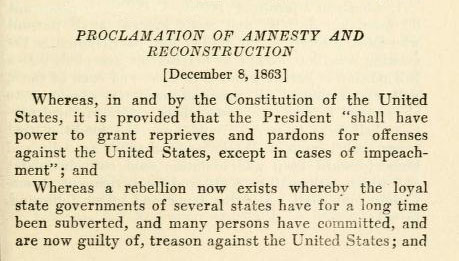 December 6, 1863 – December 19, 1863
December 6, 1863 – December 19, 1863
By Phil Kohn
Phil Kohn can be reached at USCW160@yahoo.com
In Charleston Harbor, South Carolina, on December 6, 1863, the Federal ironclad USS Weehawken takes on water via an open hatch during a moderate gale and founders. Four officers and 27 enlisted men drown in the sinking. In Tennessee, Maj. Gen. William T. Sherman and his staff, with his troops close behind, enter Knoxville.
On December 7, the Congresses of both nations begin legislative terms. In Washington, D.C., the 38th Congress convenes, while in Richmond, the fourth session of the Confederate First Congress gets under way.
On December 8, a Federal cavalry force under Brig. Gen. William Averell departs New Creek, West Virginia, to raid the Virginia & Tennessee Railroad. After destroying a section of track near Salem, Virginia, on December 16, Averell’s troopers are back behind Union lines in Beverly, West Virginia, by Christmas. Off Cape Cod, Massachusetts, a band of 17 Canadians from the provinces of New Brunswick and Nova Scotia posing as passengers seize the U.S. merchant steamship SS Chesapeake. During the takeover, one of the ship’s officers is shot and killed and three crewmen are wounded. The plan is to sail the captured vessel to Wilmington, North Carolina, for use as a Confederate blockade runner. (A significant number of residents in the Canadian Maritime Provinces sympathize with the Confederacy because of a wariness of the growing power of the U.S.; they fear that it will lead to an eventual attempt to wrest Canada from Great Britain.) Two U.S. Navy vessels in the area — the large, steam-sidewheeler USS Malvern and the steam sloop USS Dacotah — begin a pursuit.
On the same day (December 8), in Washington, D.C., President Lincoln issues a Proclamation of Amnesty and Reconstruction. The declaration promises a full pardon to Southerners who take an Oath of Allegiance to the Union and accept the end of slavery. When the number of such “loyal” Southern citizens reaches at least 10% of the votes cast in 1860 in a state, the minority could then establish a loyal state government within those states entirely or partly under Federal occupation. The offer is not extended to former U.S. military officers who have gone over to the Confederacy, nor to those who have treated negroes or whites “other than lawfully as prisoners of war.”
Maj. Gen. John G. Foster on December 9 replaces Maj. Gen. Ambrose Burnside as commander of Federal forces in eastern Tennessee. Even before his engagement with Longstreet, Burnside had requested to be relieved of command on account of ill health.
During the continual shelling of Confederate-held Fort Sumter, in the harbor of Charleston, South Carolina, a chance round on December 11 penetrates an underground magazine. The resulting explosion kills 11 defenders and wounds 41. However, no indication of the fort’s surrender is in the offing.
Lt. Gen. James Longstreet’s troops attack a Federal force under Brig. Gen. James Shackelford at Bean’s Station, Tennessee, on December 14. At first driven back, the Union soldiers make a stand and hold their ground, although they withdraw the next day.
In Virginia, Confederate Maj. Gen. Jubal Early on December 15 is assigned to command the Shenandoah Valley District.
On December 16, Gen. Joseph E. Johnston is named to replace Lt. Gen. William Hardee as permanent commander of the Army of Tennessee, now numbering some 45,000 troops at Dalton, Georgia. Although Jefferson Davis and Johnston don’t have the best relationship, the Confederate president has few alternatives to placing Johnston in command. Maj. Gen. Leonidas Polk, a Bragg subordinate who had been transferred away by President Davis in October, is named to succeed Gen. Johnston as the head of the Army of Mississippi. On the same day, in Washington, D.C., Brig. Gen. John Buford, whose cavalry troops held off the Confederates at Gettysburg long enough for the Army of the Potomac’s infantry to arrive, receives a promotion to major general a few hours before his death from typhoid that he contracted in Virginia in November. At Sambro, Nova Scotia, Canada, the vessel SS Chesapeake, taken over by Canadian Confederate-sympathizers, is captured while at anchor taking on coal by the Union vessels pursuing her: USS Malvern and USS Dacotah. While most of the Canadian captors flee, three are caught and arrested, including the individual who killed the Chesapeake’s officer during the takeover. The arrests of Canadian citizens by the U.S. Navy in Canadian waters, however, is a violation of both British sovereignty (Canada being a colony of Great Britain) and international maritime laws. Once again, briefly, Great Britain and the United States find themselves potentially on the brink of war, a situation reminiscent of the “Trent Affair” in November 1861. (Then, the captain of USS San Jacinto stopped a British ship — the Royal mail packet Trent — in international waters to remove and arrest two Confederate envoys who were aboard and traveling to England.)
On December 17, SS Chesapeake is brought to Halifax, Nova Scotia, by USS Malvern and USS Dacotah. The U.S. captains seek approval and clearance by British authorities for their actions. In the meantime, U.S. Secretary of State William Seward notifies the British that the U.S. demands the immediate return of Chesapeake and extradition to the U.S. of the “pirates” that seized the vessel. The British reply that Chesapeake’s fate will be determined in Great Britain’s Admiralty Court in London. As to the “pirates,” the British agree to extradite to the U.S. only the individual — New Brunswick resident George Wade — who killed Chesapeake’s officer during the takeover. To the outrage of U.S. authorities, however, Wade is never brought to justice, escaping from custody with the help of several influential Canadian sympathizers with the Southern cause.








